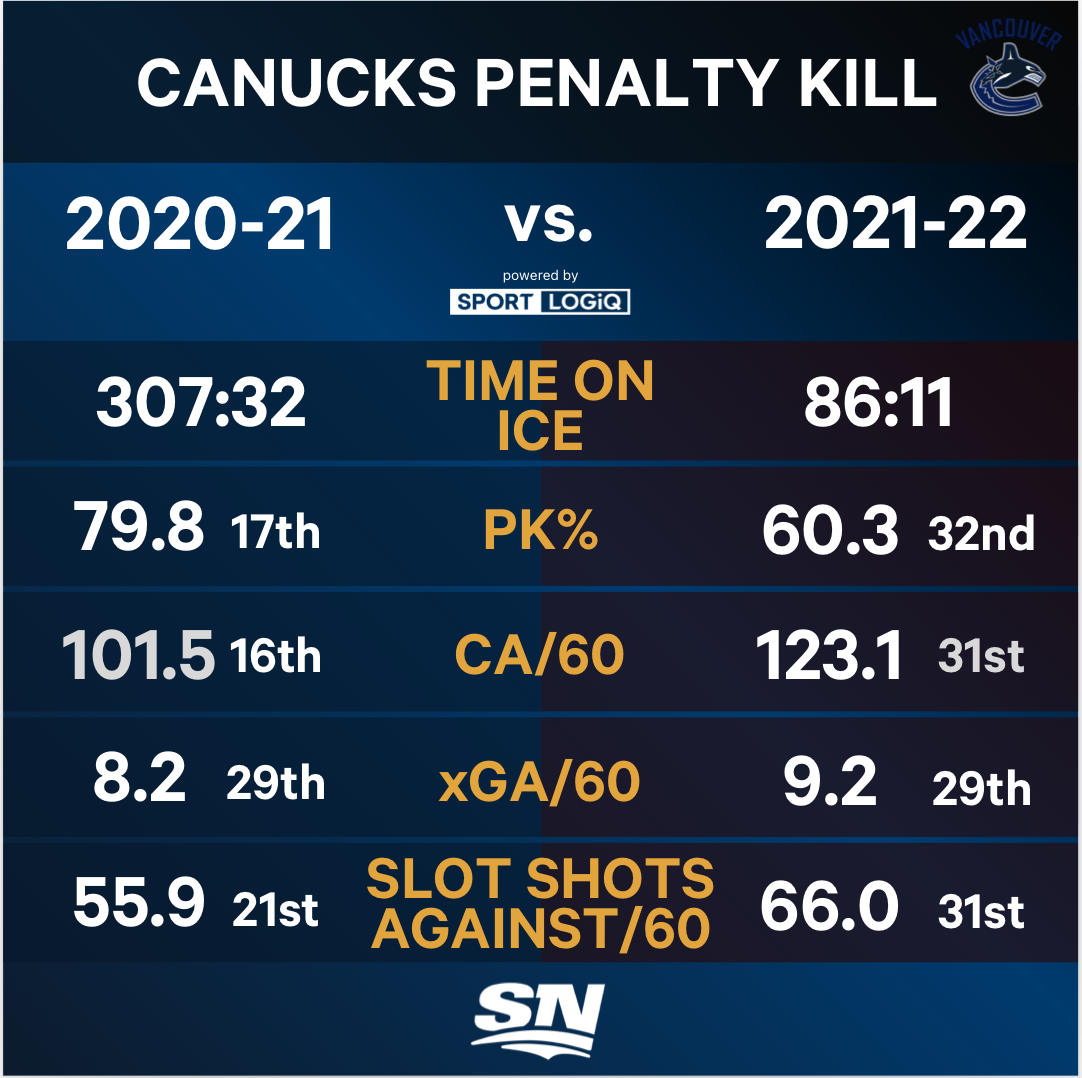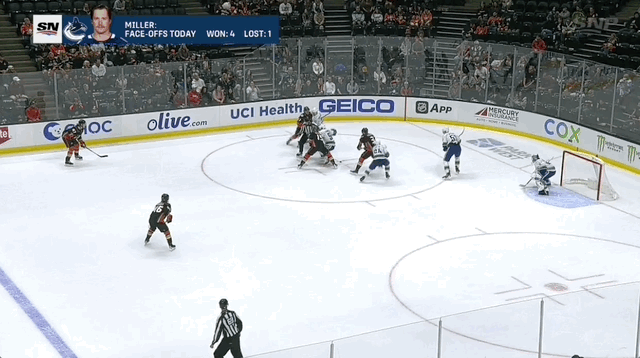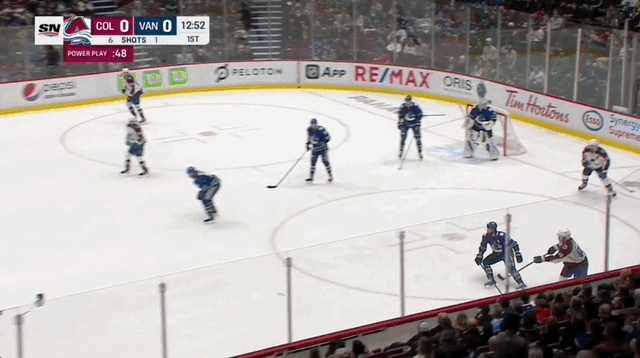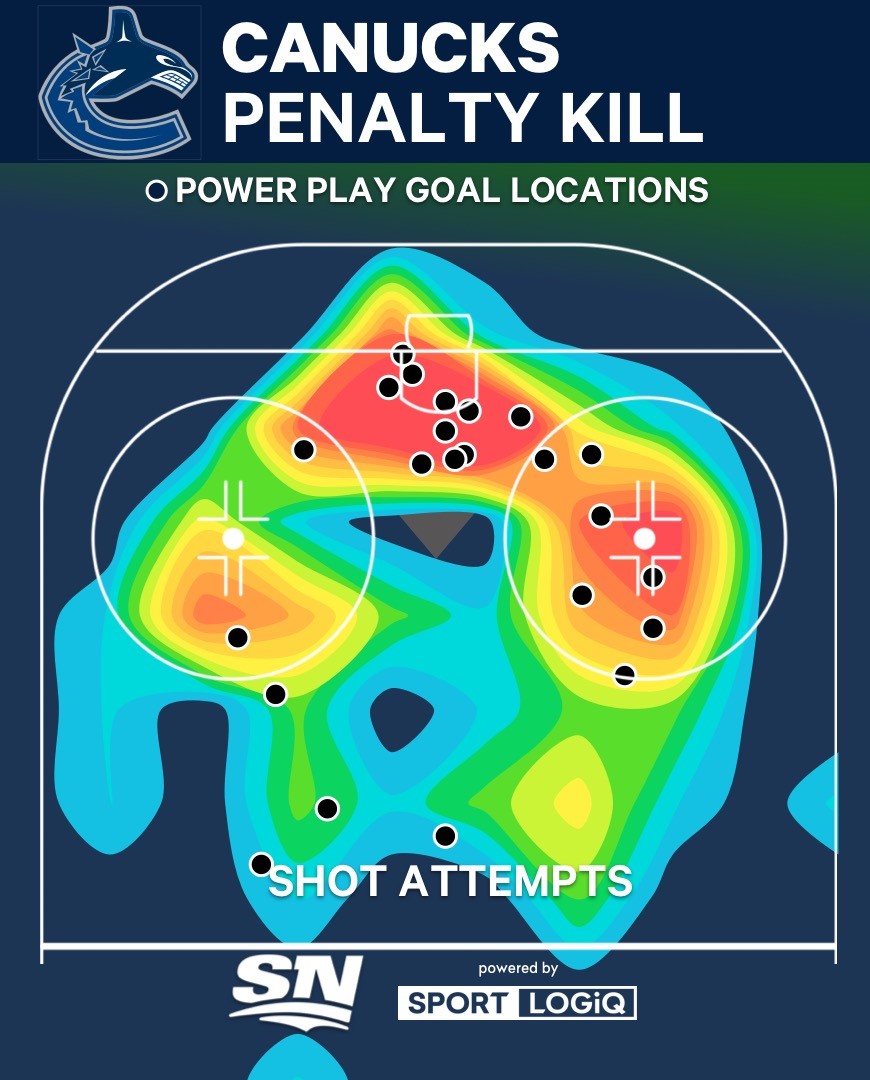The Vancouver Canucks’ penalty kill sits at the bottom of the league standings, operating at just 60.3 per cent. That’s a five-plus per cent drop from the second-to-worst in the league, their opponent Friday night, the Winnipeg Jets.
No team in the past 10 years has finished a season with a penalty kill percentage as low as the Canucks’ current rate. The worst in the past decade came last season with the New Jersey Devils’ 71 per cent penalty kill; generally, most poor shorthanded units have landed somewhere in the mid-70’s range.
Small samples can obviously amplify fewer results. Except the Canucks’ awful penalty kill percentage accurately points to what’s going wrong in Vancouver. A closer look shows just how dire their situation has become.
The Canucks weren’t coming into the 2021-22 season with a strong penalty kill by any means. They finished 17th in the league last year with a 79.8 per cent efficiency. That percentage is more reflective of goaltending than anything else; a netminder can hide a team’s faults, or in some cases, make a situation look far worse than it actually is.
That’s why it helps to measure the team’s play in front of their goaltender to really assess how well or poorly a team is killing penalties before it reaches the last line of defence in net.
Allowing a rate of 101.5 shot attempts against per 60 minutes, Vancouver's penalty kill ranked in the middle of the league in the shot volume allowed last season. While they limited some shots, they struggled to limit quality chances against, shifting to the bottom-10 in slot shots against. Expected goals can also be used as a proxy for shot quality and by that metric, the Canucks were third to last with a high rate of 8.24 expected goals against.
So, there was clearly room for this team to build up and provide their goaltender, Thatcher Demko, more support than last year while shorthanded. Unfortunately, their play has only trended in the wrong direction this season.

Vancouver’s shorthanded weaknesses start at the face-off dot, as they’ve only won about 42 per cent of their draws (and 43 per cent in their own zone, which keeps them in the bottom half of the league).
While face-offs matter in men’s hockey, that value can be over-emphasized at even strength in particular. But special teams face-offs can have a different meaning. Research tells us it can take a few more seconds for a team on the power play to generate a shot post-offensive zone draw versus a group at even strength. At face value, that could give the idea that losing a d-zone draw isn’t as daunting for a shorthanded team. The reason that power play team may not fire off a shot as quickly, though, is that winning the draw gives them more time to get in formation and then start shooting. And as we know from the work of Arik Parnass, now with the Colorado Avalanche, getting into formation bodes well for a team’s power play efficiency.

Teams are getting into formation against Vancouver and shooting quite a bit. The Canucks have allowed the second highest rate of shot attempts against while shorthanded. Despite the Canucks’ efforts to block shots, a high number of attempts are still getting through to their goaltender.
Of course, not all shots are equal. If a penalty kill is allowing a high rate of shots against, but they’re keeping their opponent to the perimeter, it can be successful because they’re protecting the higher quality areas of the ice and making their goaler’s job easier. That is not the case in Vancouver.

Opponents are able to take shots from the slot at a high rate. The only team to allow more from there shorthanded is the Ottawa Senators. And teams on the power play are getting these slot attempts with little pressure from Vancouver.
Based on the overall quality of all shot attempts against, the Canucks are expected to allow 9.2 goals against per 60, which is a full goal more than last year’s shorthanded units.

The team struggles to get out of its own end, whether after losing a draw or once an opponent regroups to enter the zone (and the Canucks are in the bottom-10 in entry denial rate).

Vancouver is 31st in the league in percentage of time they spend in the defensive zone while shorthanded. They aren’t retrieving loose pucks enough, nor are they carrying the puck out when they finally get it back on their sticks -- they’re last in carry-out rate. Teams dump the puck out more than they carry it on the penalty kill, because sometimes the objective is to clear it (or that’s the only play they can really attempt at the time). Carry outs, though, can help do more than just clear the zone to tick time off the clock, even if the team doesn’t bring it up the ice for a shorthanded chance for. But the Canucks aren’t too successful in their dump-out attempts, either.
So, when GM Jim Benning noted that the team, in hindsight, should have added another centre for the penalty kill he did have a point. They did not adequately plan out their personnel for their shorthanded units when considering the health of the skaters they thought they’d have available. The plan may have been to have Tyler Motte, Brandon Sutter, Jason Dickinson, and Matthew Highmore, but they’ve really only had Dickinson of that group so far.
Up front, it’s been J.T. Miller, Jason Dickinson, and Juho Lammikko leading the way in shorthanded ice time. And on defence, Tyler Myers, Oliver Ekman-Larsson, and Tucker Poolman play the highest percentage of penalty killing minutes.
But their problems are deeper than just personnel. Getting Motte back will help, but one player isn’t going to suddenly turn the entire team’s shorthanded play around. The only player with that power, honestly, is the goaltender -- and he would just be masking the mess in front of him. Tactical decisions and execution are failing the Canucks for their penalty kill to be this disastrous so far.
Maybe one solution is having Brad Shaw help Nolan Baumgartner in some of the strategic decisions on the penalty kill. Shaw joined the team behind the bench after his tenure in Columbus, where the penalty kill was a speciality of his. He helped turn their shorthanded units into a power kill that was both defensively sound and more aggressive offensively.
As it stands, Vancouver needs more than one solution, though -- and that’s just on the penalty kill. Unfortunately for the Canucks, their shorthanded play is just one of the many reasons for their disappointing start.
Data via Sportlogiq
